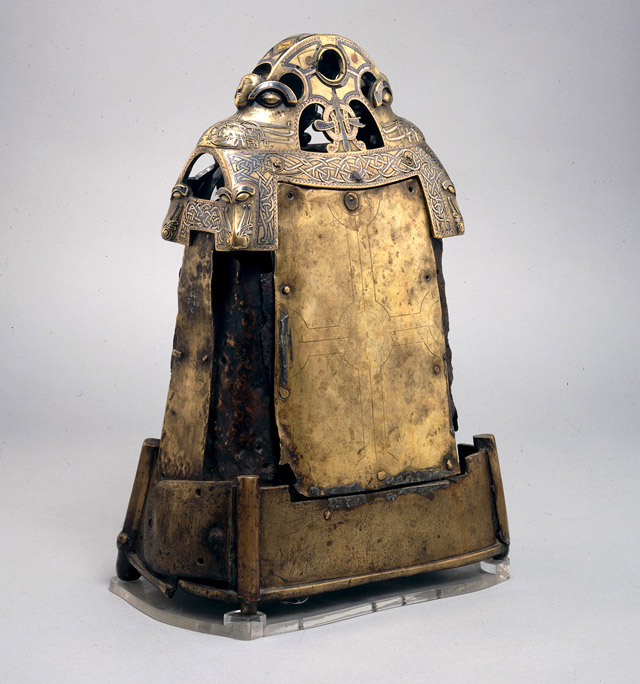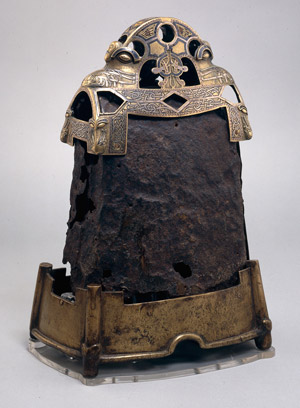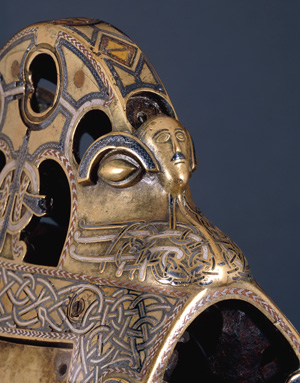Bell and Bell Shrine of St. Cuileáin
The British Museum, London
Copyright © The Trustees of the British Museum

 Select the image to zoom
Select the image to zoom
The history of this famous shrine (called the Barnaan-Cuilawn) is shrouded in legend: St. Cuileáin (seventh century), the patron saint of Glankeen in County Tipperary, is reputed to have made the bell himself, yet nothing is known about its original use, and it is said to have been discovered in the hollow of a tree in Kilcuilawn in Glankeen. Once "rediscovered," the bell was used within the parish as a truth test: liars who came into contact with the shrine reputedly fell into convulsions. If the bell was tied around the neck of a deceiver it would eventually strangle the wearer. In later years the bell was hired out by a Mrs. Dunn for people to swear upon by touching it with a hazel stick. Possession of the bell was also reputed to bring good luck to the owner. A seventeenth-century narrative concerning "Burke from the Castle of Burrissleigh" recounts how the man lost the bell shrine only to have it returned to him a few nights later, reappearing on his bedside table.
The iron bell is coated in bronze, and the top portion is decorated with engravings in a Scandinavian animal-interlace decoration. Human heads, which are engraved on either side of the top crown of the object, appear as motifs on other bell shrines: in the National Museum of Ireland, the bell shrine crest of Killua depicts a human face between two monsters. A cross engraved on the bronze sheeting of St. Cuileáin's shrine outlines where a jeweled crucifix was once attached; this was unfortunately removed and stolen in 1802 when the object was stored by Father Michael Bohun in an open stable.






